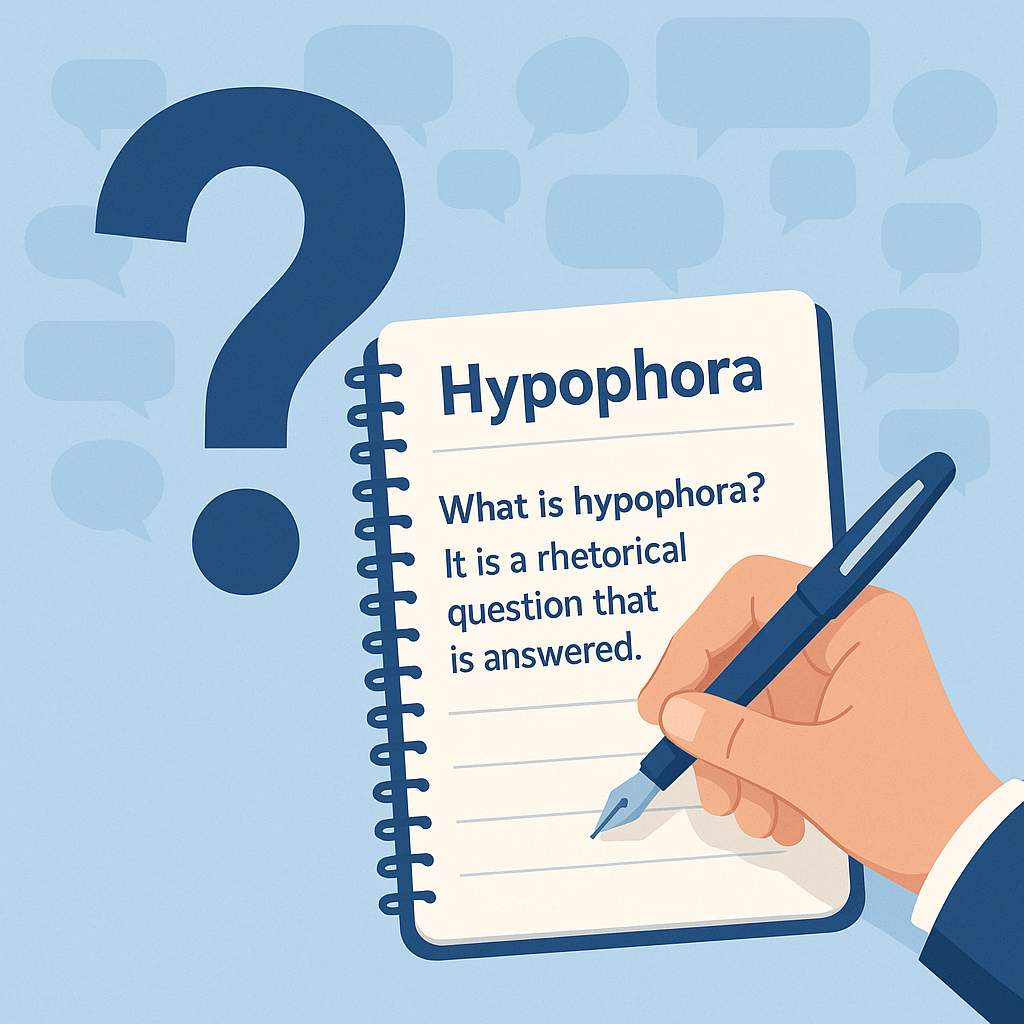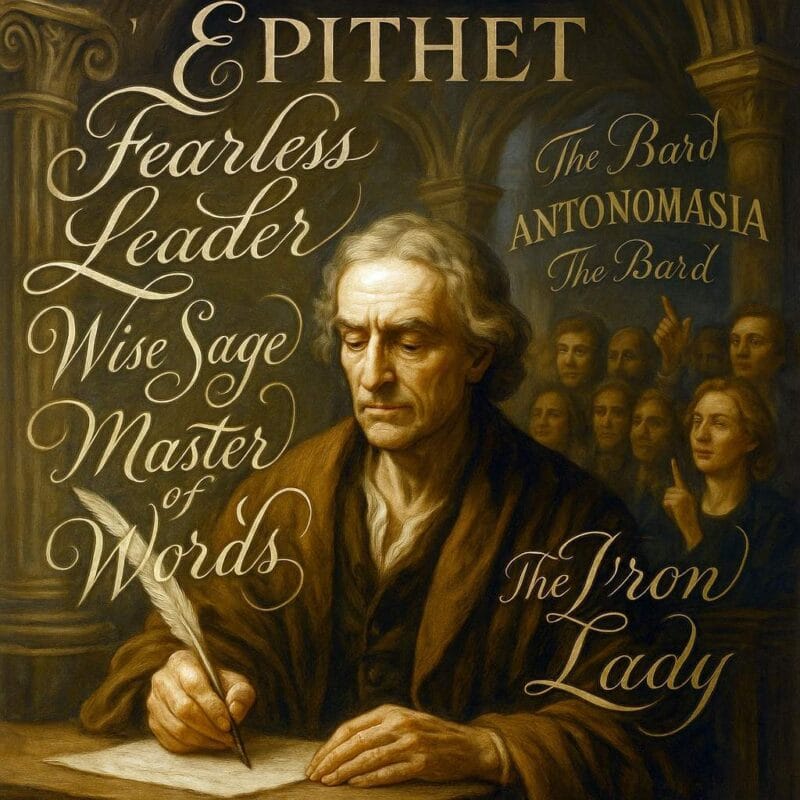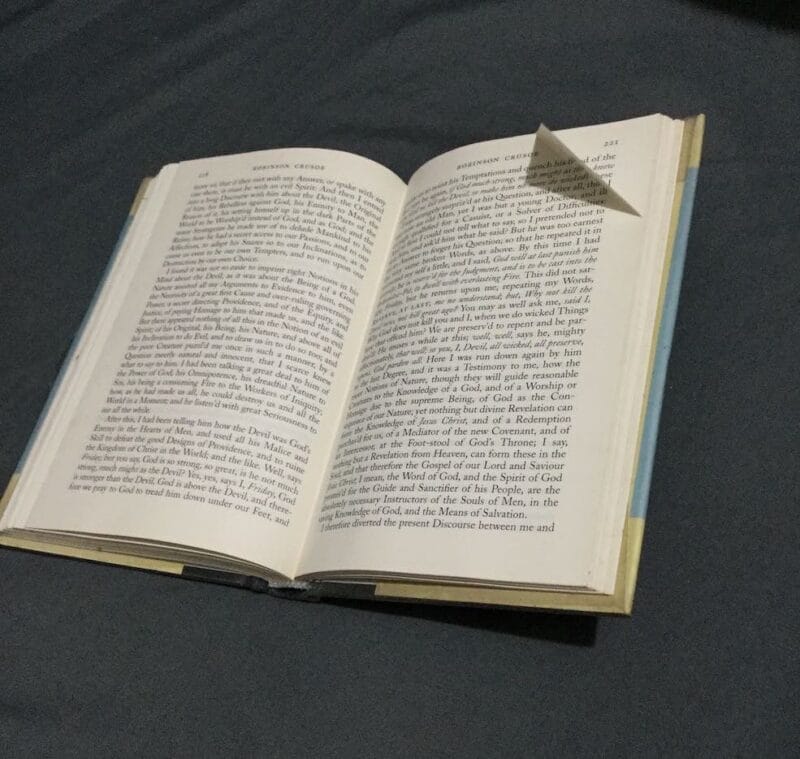Hypophora is a rhetorical figure in which a speaker or writer raises a question and then immediately provides the answer. By uniting the inquiry with its resolution, the device creates a sense of movement that carries the audience through a line of thought. It has a natural rhythm that makes it effective in oratory, essays, fiction, and even casual conversation, where it can lend clarity and direction to the exchange.
Since antiquity, writers and rhetoricians have relied on hypophora to maintain control over interpretation. Framing both the question and the answer anticipates the curiosity of an audience and channels their attention toward a chosen conclusion. This balance of asking and answering does more than fill silence; it provides structure and authority, giving speech or prose a shape that feels deliberate and persuasive.
Hypophora in Classical and Modern Usage
The roots of hypophora lie in classical rhetoric, where orators employed it to captivate attention and maintain authority in discourse. Cicero and Quintilian both described forms of self-questioning that resemble what we now call hypophora. In contemporary writing, the device remains effective because it mimics a natural rhythm of thought.
In classical literature, the device often provides emphasis or creates a reflective pause. In Julius Caesar (1599), Shakespeare gives Brutus a moment of hypophora when he defends his role in Caesar’s assassination: “Had you rather Caesar were living, and die all slaves, than that Caesar were dead, to live all free men? As Caesar loved me, I weep for him; as he was fortunate, I rejoice at it; as he was valiant, I honor him; but, as he was ambitious, I slew him.” The question frames the dilemma, and the immediate answer guides the audience toward Brutus’s justification.
In modern usage, consider Barack Obama’s keynote address at the 2004 Democratic National Convention: towards the end of his speech, he said, “Do we participate in a politics of cynicism or a politics of hope?” He immediately resolved it with a vision of hope, moving from references to contemporary politicians who called for hope to a catalogue of historical and personal images that culminated in the phrase “The audacity of hope!” The pattern demonstrates hypophora’s persuasive force, as the question channels curiosity while the answer supplies conviction.
Hypophora vs. Rhetorical Question (Erotema)
A frequent source of confusion is the distinction between hypophora and the rhetorical question, also known by the classical term erotema. A rhetorical question is posed not to be answered but to stress a point or stir emotion. For example, in William Blake’s The Tyger (1794), the line “What immortal hand or eye could frame thy fearful symmetry?” remains unanswered, heightening the sense of mystery.
Hypophora, by contrast, ensures resolution. The speaker does not leave the audience in suspense but delivers the answer directly, often within the same breath. This structural difference explains why the two figures serve different rhetorical purposes even though they share a surface similarity.
Close Relatives of Hypophora
Anthypophora
The term “anthypophora” is often treated as synonymous with hypophora, though some rhetorical manuals reserve it for a slightly different function. In its stricter sense, anthypophora involves raising an objection or potential counterpoint and then refuting it. A clear instance appears in the previously mentioned quote from Julius Caesar, in the same passage where Brutus justifies Caesar’s death by anticipating criticism and answering it through an appeal to his loyalty to Rome.
Procatalepsis
“Procatalepsis” operates very close to anthypophora. It is the act of pre-empting an objection and responding to it before it can be voiced. This device often appears in persuasive essays and political speeches, where authors anticipate resistance to their arguments. The difference from hypophora lies in the anticipatory stance: while hypophora typically frames the speaker’s own guiding question, procatalepsis addresses an opponent’s presumed objection.
Prolepsis
“Prolepsis” is another term that overlaps with both hypophora and procatalepsis. In rhetorical contexts, prolepsis also involves anticipation, though its scope can be broader. It may describe the anticipation of objections or, in literary analysis, the anticipation of later events through flash-forward. When used rhetorically, prolepsis functions as a cousin of hypophora, since both involve forward-thinking structure. The key distinction lies in prolepsis’s wider range of anticipatory techniques beyond the question-and-answer format.
Subiectio
A less commonly cited but historically attested term is “subiectio,” which classical rhetoricians described as asking and then immediately answering one’s own question. It is essentially another name for hypophora, highlighting how traditions of rhetorical study often developed overlapping labels for similar techniques.
Why Hypophora Persists as a Stylistic Device
The enduring appeal of hypophora rests in its dual ability to engage and instruct. By posing a question, a writer gives voice to the curiosity, doubt, or wonder that might stir in the audience’s mind. By immediately supplying the answer, the writer retains control of the conversation and prevents misdirection. This balance is particularly valuable in persuasive writing, where steering the flow of thought is as important as presenting information.
Even in creative prose, hypophora lends rhythm and resonance. It dramatizes the process of inquiry, giving shape to moments of contemplation. When used with care, it can heighten persuasion, dramatize thought, or sustain narrative reflection.




